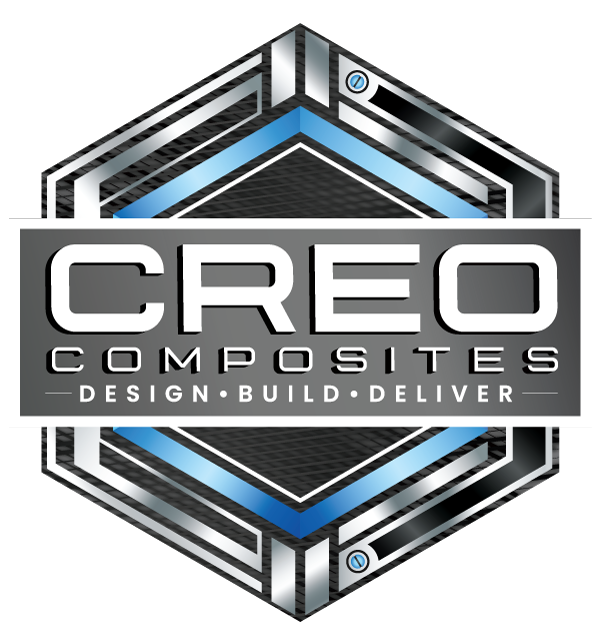

FRP (Fiber Reinforced Polymer) is a game-changer in modern engineering and construction due to its unique combination of strength, durability, and lightweight properties.
Our FRP products feature a high-friction surface that significantly reduces the risk of slips and falls, even in wet or oily environments. Designed for industrial, marine, and public access areas, the anti-slip texture ensures reliable footing for enhanced safety. Its wear-resistant properties maintain performance over time, providing a long-lasting safety solution with minimal maintenance needs.
FRP products are engineered for quick, straightforward installation without specialized tools or heavy equipment. Their lightweight yet strong structure allows for manual handling, reducing labor time and costs. Pre-fabricated designs, precise fittings, and modular components ensure seamless assembly, making them ideal for projects where speed and efficiency are crucial.
Our FRP solutions meet stringent fire safety standards, offering high flame-retardant performance without emitting toxic smoke. Designed for critical infrastructure, transportation, and public spaces, these materials resist ignition, self-extinguish quickly, and maintain structural integrity under high temperatures. This makes them an ideal choice where safety and compliance are top priorities.
FRP offers unmatched design flexibility, allowing it to be fabricated in virtually any shape, size, length, or color. This adaptability enables customized solutions that meet exact project requirements without compromising strength or durability. Whether for structural components, decorative elements, or specialized applications, FRP’s versatile manufacturing process ensures precision engineering, seamless integration, and aesthetically pleasing results across industries.
FRP components deliver exceptional strength while being significantly lighter than metal alternatives. This weight advantage allows for easier handling, faster installation, and reduced structural load without compromising durability or performance. Lightweight design lowers transport costs, minimizes lifting equipment requirements, and offers improved versatility in applications ranging from construction to marine and electrical installations.
FRP’s unique combination of corrosion resistance, strength, and durability translates into an exceptionally long operational lifespan. Even in aggressive environments, it maintains its structural and aesthetic integrity for decades, reducing replacement frequency and ensuring long-term value for infrastructure and industrial investments.
FRP products require minimal upkeep thanks to their resistance to corrosion, weathering, and chemical damage. Their durable surfaces eliminate the need for painting, galvanizing, or rust-proofing, significantly reducing lifetime costs. This makes them an ideal choice for remote or hard-to-reach installations where maintenance is difficult or costly.
FRP systems are designed with modularity in mind, enabling flexible configuration and quick on-site assembly. Components can be easily adjusted, expanded, or replaced, reducing downtime and installation costs. This adaptability makes FRP an excellent choice for industries that require scalable, customizable solutions, such as platforms, walkways, cable management systems, and protective barriers.
Engineered with corrosion-resistant properties, FRP materials remain unaffected by moisture, chemicals, and saltwater exposure. Unlike steel, they will not rust, pit, or degrade in harsh environments, making them ideal for coastal, chemical processing, and industrial applications. This ensures long service life, reduced maintenance costs, and consistent performance in even the most aggressive conditions.
FRP offers exceptional tensile and compressive strength, enabling it to withstand heavy loads and extreme stresses. Advanced reinforcement technology ensures structural integrity across demanding applications such as bridges, platforms, and load-bearing components. Its unique strength-to-weight ratio allows for robust construction while minimizing overall mass, making it a preferred choice for high-performance engineering projects.
FRP materials are inherently non-conductive, making them safe for use around electrical installations and high-voltage environments. This property eliminates the risk of electric shock, making FRP an excellent alternative to metal for cable trays, ladders, platforms, and safety railings in power plants, substations, and telecom facilities.
Formulated with UV-stabilized resins, our FRP products maintain color, strength, and integrity even after prolonged sun exposure. Ideal for outdoor applications, they resist degradation, chalking, and brittleness caused by UV radiation. This ensures a long-lasting, maintenance-free solution for infrastructure, marine, and architectural projects in high-sunlight regions.
Designed to withstand extreme temperatures, moisture, and wind, FRP retains its performance and appearance under all weather conditions. Unlike metals and wood, it does not warp, corrode, or degrade when exposed to rain, snow, UV rays, or saltwater, ensuring long-term durability in outdoor environments.
FRP products contribute to sustainable development by reducing the need for frequent replacement, lowering material waste, and minimizing maintenance-related environmental impacts. Many components can be manufactured with recycled content and are fully recyclable at end of life. Their long lifespan and low energy footprint support eco-friendly engineering.
FRP delivers the structural performance of steel at a fraction of the weight, enabling easier handling and reduced installation costs. This outstanding strength-to-weight ratio makes it ideal for aerospace, transportation, marine, and infrastructure applications where high load-bearing capacity and low mass are equally important.
| Parameter | FRP | Steel | Aluminium | Concrete | Wood |
|---|---|---|---|---|---|
| Strength-to-Weight | High (Stronger than steel per weight) | High | Moderate | Moderate | Low |
| Corrosion Resistance | Excellent (No rust, chemical resistant) | Poor (Rusts easily) | Moderate (Oxidation) | Moderate (Can crack) | Moderate (Can crack) |
| Durability | Very High (Long life, impact-resistant) | High | Moderate | High | Low (Termite risk) |
| Maintenance | Low (Minimal upkeep needed) | High (Painting, rust protection) | Moderate (Coating required) | High (Cracks, repairs) | High (Weathering, pests) |
| Weight | Lightweight (75% lighter than steel) | Heavy | Light | Very Heavy | Very Heavy |
| Electrical Insulation | Excellent (Non-conductive) | Poor (Conductive) | Poor (Conductive) | Moderate | Good |
| Thermal Conductivity | Low (Good insulator) | High (Conducts heat) | Moderate | Low | Low |
| Cost | Moderate (High initial, low lifecycle cost) | Low (High maintenance) | High (Expensive raw material) | Low | Low |
| Installation | Easy & Quick (Prefabricated, no welding) | Difficult (Heavy, welding required) | Moderate (Requires fasteners) | Difficult (Heavy, labor-intensive) | Easy |
| Customization | High (Moldable into complex shapes) | Moderate | Moderate | Low | Moderate |
| Sustainability | High (Recyclable, energy-efficient) | Moderate | Moderate | Low | High |